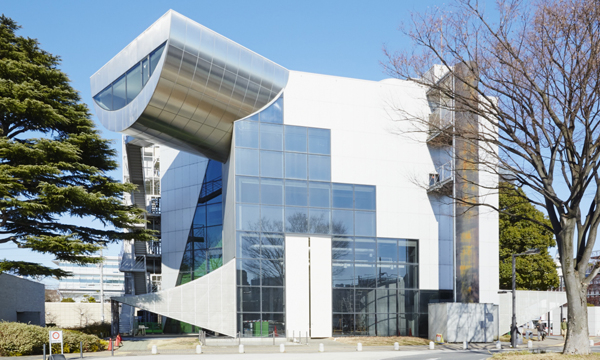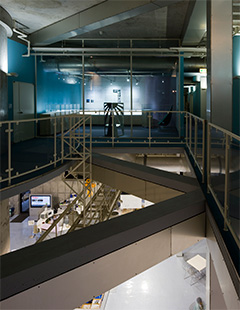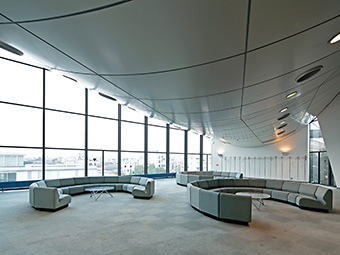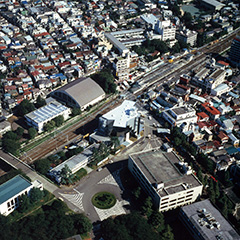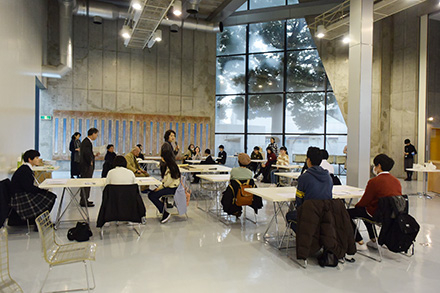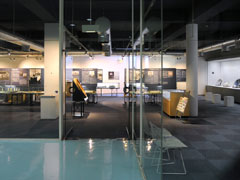
Glass-paneled Special Exhibition Room A, B1 floor
Six rooms on the B1 and 2nd floors of Centennial Hall have been allocated to the Museum and Archives for permanent exhibitions, where highlights of Tokyo Tech's education and research are displayed. There are many works of art on the B1 floor, including ceramics and glassware. Some visitors are surprised to encounter ceramics in a renowned science and engineering university museum. However, upon seeing and reading about Gottfried Wagener featured in the exhibit, the visitor quickly comes to appreciate the long history of the Institute, which promoted the advancement of technology and the training of technical leaders, the roots of which lie in ceramic engineering and textile-dyeing. Both of these industries require scientific knowledge, technical ingenuity, and innovation. The works of art of three living national treasures and Tokyo Tech graduates, Shoji Hamada, Keisuke Serizawa, and Tatsuzo Shimaoka, along with those of other renowned Japanese potters and Tokyo Tech graduates, such as Kanjiro Kawai, are on display.
The following works of art represent a selection of researchers, artists, and items on display in Special Exhibition Rooms A and B on the B1 floor:
Special Exhibition Room A
. Any information published on this site will be valid in relation to Science Tokyo.


